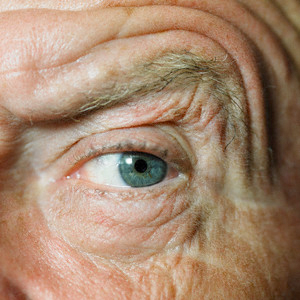Healthy Vision and Disease Prevention
 Often seniors assume that poor eyesight is a natural part of growing old. By age 65, it is estimated that 1-in-3 Americans have some form of vision impairing eye disease. By detecting and treating eye disease early through annual, dilated eye exams, seniors can preserve their sight. In a study by John Hopkins University produced to try to convince Medicare and insurance companies to put a stronger emphasis’ on preventive eye care, the report looked at a 5 percent sampling (approximately 1.5 million people) of Medicare beneficiaries continuously enrolled from 1999 to 2003 and concluded that those with moderate, severe and total vision loss experienced increases in depression, injuries and the need for nursing home facilities.
Often seniors assume that poor eyesight is a natural part of growing old. By age 65, it is estimated that 1-in-3 Americans have some form of vision impairing eye disease. By detecting and treating eye disease early through annual, dilated eye exams, seniors can preserve their sight. In a study by John Hopkins University produced to try to convince Medicare and insurance companies to put a stronger emphasis’ on preventive eye care, the report looked at a 5 percent sampling (approximately 1.5 million people) of Medicare beneficiaries continuously enrolled from 1999 to 2003 and concluded that those with moderate, severe and total vision loss experienced increases in depression, injuries and the need for nursing home facilities.
More than half of the cases in the study were due to age-related macular degeneration (AMD) and glaucoma. A sizable number of cases of vision loss were due to cataracts that had not been surgically removed.
What eye disease effect seniors the most? There are four major eye diseases that dominate when it comes to decreased or vision loss in seniors. Many seniors suffer complications from one or more of the following; cataracts, glaucoma, age-related macular degeneration and diabetic eye disease.
Cataracts
A cataract is a clouding of the lens in the eye that affects vision. Most cataracts are related to aging and are very common in older people. In fact, by age 80, more than half of all Americans either have a cataract or have had cataract surgery.
Symptoms are usually cloudy or poor vision, poor night vision, halos around lights, colors seem faded and the need for frequent changes in prescriptions.
In the early stages difficulty from cataracts may be improved with new eyeglasses, brighter lighting, anti-glare sunglasses, or magnifying lenses. By the later stages cataract surgery may be need to remove the clouded lens and replace it with an artificial lens.
Glaucoma
Glaucoma is a group of diseases that can damage the eye’s optic nerve. It is one of the leading causes of blindness in the United States, and the most common cause of blindness among African-Americans. More than three million people have glaucoma, but half do not realize it because there are often no warning symptoms.
Damage progresses very slowly and destroys vision gradually, starting with the side vision or what is called peripheral vision. One eye covers for the other, and the person remains unaware of any problem until a majority of nerve fibers have been destroyed, and a large part of vision has been destroyed and straight ahead vision is affected. This damage is irreversible.
Treatment cannot recover what has been lost. But it can arrest, or at least, slow down the damage process. That is why it is so important to detect the problem as early as possible, to be able to start treatment with as little damage to the vision as possible. Medication in the form of eye drops or pills are the most common early treatment for glaucoma. Laser or conventional surgeries are also available options when needed.
Age-related Macular Degeneration
Another disease which often gives no major symptoms until excessive vision loss occurs, macular degeneration is when the center (the macula) of the inner lining of the eye (the retina) begins to suffer thinning, atrophy, and sometimes bleeding. The result can lead to central vision loss and is the leading cause of impaired low vision in the United States.
The symptoms of macular degeneration can be different for different people and may affect just one eye or both. General; the person loses center vision but not peripheral vision or side vision is generally not affected. For this reason, macular degeneration alone does not result in total blindness. However it can make reading or close work difficult or impossible.
Medication and/or laser surgery can aid some cases of wet AMD. At the present time, there is not an effective treatment for advanced dry AMD, however treatment can delay and possibly prevent intermediate AMD from progressing to the advanced stage, in which vision loss occurs.
Diabetic eye disease
Approximately 16 million people in the United States have diabetes and one-third of them do not know it. People with diabetes are 25 times more likely to become blind than people without it. There generally are no early warning sign or pain associated with diabetic retinopathy. Characteristic signs of retinal changes are often only detected through an eye exam of the retina. Treatment may involve laser surgery to remove the cloudiness. Early detection and proper treatment can the risk of losing your vision to diabetic complications by half. Early detect of these common senior eye diseases not only work to save your vision but help reduce the staggering long term cost associated with care for low vision and blind seniors.
For additional information or to schedule an Eye Examination, please contact us at 1.866.611-7556.
Also Serving:
Sealy, TX - Bellville, TX - Columbus, TX - Katy, TX |
